This Wilderness Camp ‘Disappears’ Every Year to Protect Tigers & Forests in Madhya Pradesh
Near the Pench National Park in Madhya Pradesh, night heralds a unique sight. As the skies turn inkier, the villagers prop themselves on machans (beds made on raised platforms), prepping for a long vigil. Their ears perk at the slightest sound. Spotting the culprit that’s devouring their crops is easy. Catching it isn’t.
The vigil is tiring. But, take a step back and you’ll see that the larger picture — miles of starry skies and rolling fields — is quite breathtaking. You might even be tempted to hop onto a machan yourself.
In fact, why don’t you?
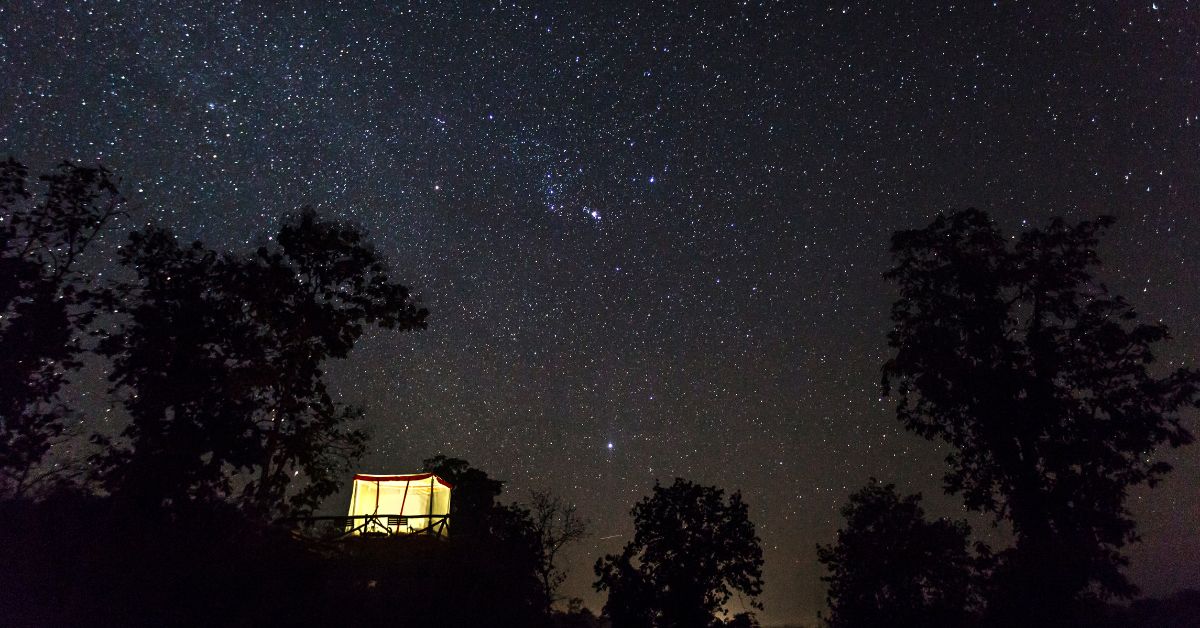 At Jamtara Wilderness Camp, the Star Bed concept allows guests to experience a night under the Milky Way
At Jamtara Wilderness Camp, the Star Bed concept allows guests to experience a night under the Milky Way
 Jamtara Wilderness Camp is a sustainable stay in Madhya Pradesh where eco-friendly practices are the main focus
Jamtara Wilderness Camp is a sustainable stay in Madhya Pradesh where eco-friendly practices are the main focus
At Madhya Pradesh’s Jamtara Wilderness Camp, this is precisely the idea behind the ‘Star Bed’. Here, you aren’t a tourist. You’re an audience for whom the crickets, owls, frogs, and jackals put on a show. Nature obliges their rhapsody with perfectly choreographed movements. But, as Amit Sankhala, a third-generation conservationist — Amit’s father, Pradeep and grandfather, Kailash, were pioneers of conservation and eco-tourism — point out, the highlight of the experience at Jamtara isn’t just its beauty.
“You’re also contributing to the empowerment of local farmers,” he tells The Better India.
Here, sustainability is hinged on a 95 percent dependence on local produce. “We believe in everything coming from within 40 sq km of the village. Only then will the communities see a direct benefit. Only then will they see tourism from a very different angle,” Amit underscores.
A look at the Sankhala lineage suggests that nature has always held a relatively reverential spot. And this love traces back to Kailash Sankhala.
Early childhood and expeditions in the jungle
Growing up, elephants and squirrels were Amit’s best friends. The destinations of choice for childhood vacations were national parks and sanctuaries, while his grandfather Kailash undertook research projects in and of the wild.
He shares with The Better India, “I’d go with him [Kailash] for weeks to Ranthambore [National Park in Rajasthan],” Amit has fond memories. To him, Kailash was the reason for his camaraderie with nature; India, meanwhile, remembers Kailash as being synonymous with Project Tiger.
 Kailash Sankhala was chosen by Indira Gandhi to head Project Tiger initiative in 1973
Kailash Sankhala was chosen by Indira Gandhi to head Project Tiger initiative in 1973
It was around 1969 when Kailash blew the whistle on the plummeting tiger numbers. He wasn’t the only one who’d noticed the red flag. A survey by Bombay Natural History Society had also noted the dip, compelling the IUCN (International Union for Conservation of Nature) to declare the tiger ‘endangered’. In 1972, things weren’t looking too good; the tiger census was just about 1,827.
Against this grim backdrop, Kailash was chosen by then-President Indira Gandhi to head the Project Tiger initiative in 1973. He was joined by then-cabinet minister Karan Singh. There was a monumental change that found its spark under their leadership — hunting was banned, reserves were created, and tiger numbers were resuscitated.
In 1992, Kailash was awarded the Padma Shri for his contributions to tiger conservation.
Following the passing of Kailash two years later, his son Pradeep took over. Under his leadership, the family’s Kanha Jungle Lodge (set up in 1989) and Bandhavgarh Jungle Lodge (set up in 1990) — both in Madhya Pradesh — saw an infusion of sustainable concepts, including medicinal plant gardens, solar cookers, and vermicomposting.
 Jamtara Wilderness Camp is a 10 luxury tented camp in the heart of rural Pench
Jamtara Wilderness Camp is a 10 luxury tented camp in the heart of rural Pench
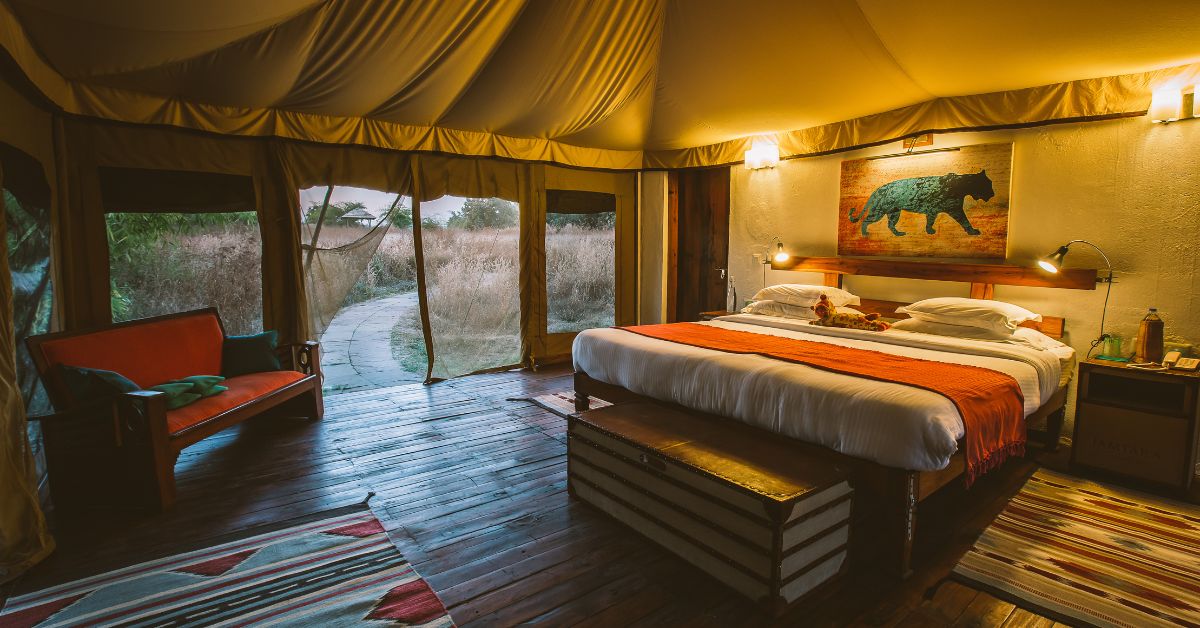 Surrounded by tall Arjuna Trees and an ancient Banyan, Jamtara Wilderness Camp overlooks the forest
Surrounded by tall Arjuna Trees and an ancient Banyan, Jamtara Wilderness Camp overlooks the forest
Amit watched and learned.
The forest is where he felt most at home. Inside its perimeters, the thrum of the outside world ebbed. In a bid to savour the feeling forever, he created Jamtara Wilderness Camp. “The idea was to get away, to create a place where time would stop,” he recalls.
The eco-stay contemplates the Sankhala family’s responsibility towards nature. Community empowerment is at the heart of their model: right from the farm-to-table concept — “Farmers here grow what we need; cauliflower, cabbage, beans while receiving a fair price for their produce”; to providing the local school with access to fresh water, desks and a leakage-proof roof to working closely with the panchayat (village governing body) to uplift the village.
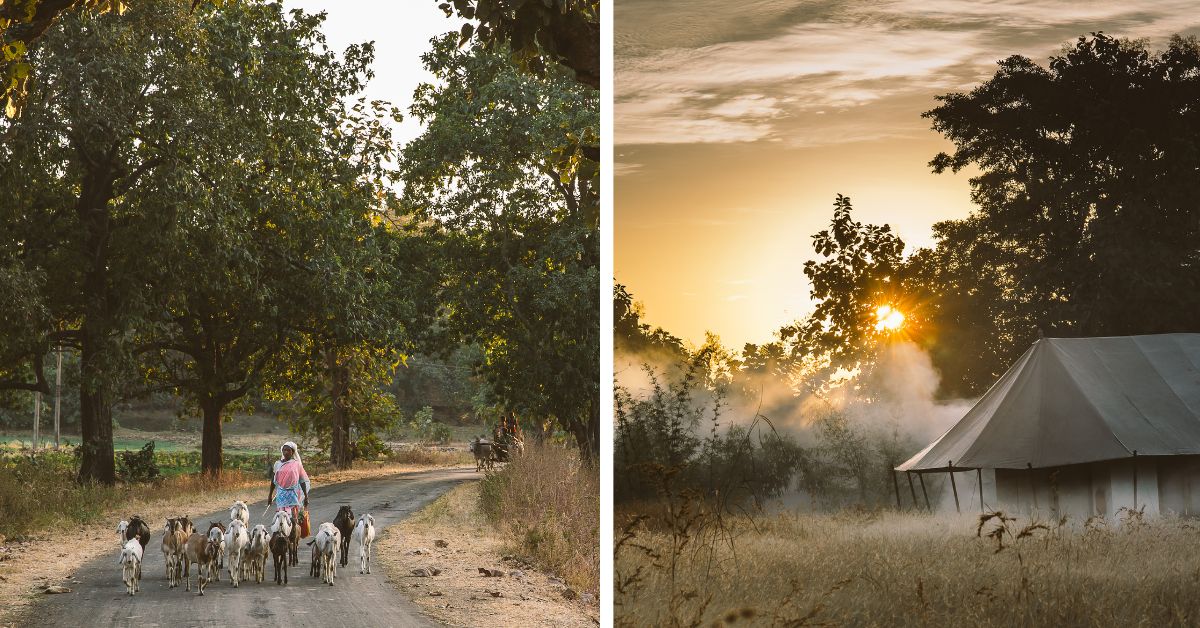 Every year, the flooring comes out, the furniture packs up in May, and the jungle is allowed to take over again
Every year, the flooring comes out, the furniture packs up in May, and the jungle is allowed to take over again
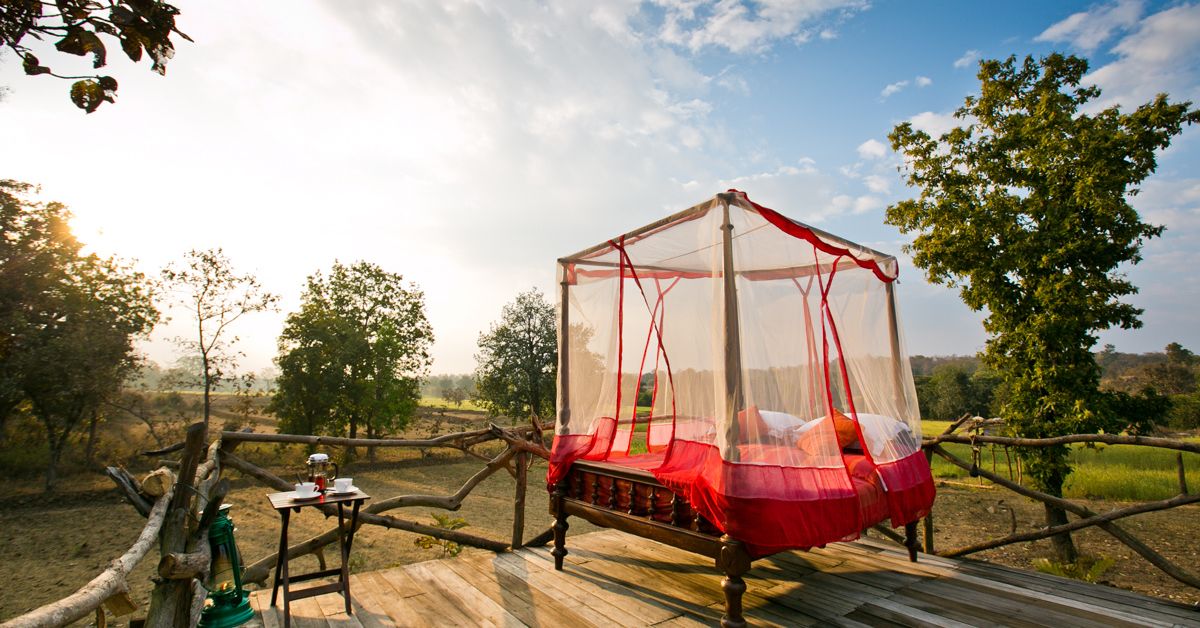 The machans at Jamtara Wilderness Camp gives guests an authentic experience of immersing themselves in nature
The machans at Jamtara Wilderness Camp gives guests an authentic experience of immersing themselves in nature
Tourism for tourism’s sake isn’t the goal here.
Cocooned in one of the 10 luxury tented camps surrounded by kaleidoscopically diverse flora, you’ll find yourself striking up a conversation with nature.
Let it have the last word.
If you were to GPS your way to the Jamtara Wilderness Camp in May, you wouldn’t find it. In its place, you’d find enthusiastic streams and wildlife skulking in the shadows. You might wonder if you’ve got the address wrong.
Nope.
“The camp dismantles at the beginning of May every year and is rebuilt by late September. We allow the jungle to take over again,” Amit confirms. “The tents come down, the flooring comes out, and everything packs into the only solid structure of the room, which is the bathroom. The dining hall acts as a protection for all the bigger furniture and seals everything in one building. Nature takes over through the monsoon. Streams start to flow, wildlife takes refuge near the tent structures, and our impact on the land is minimised.”
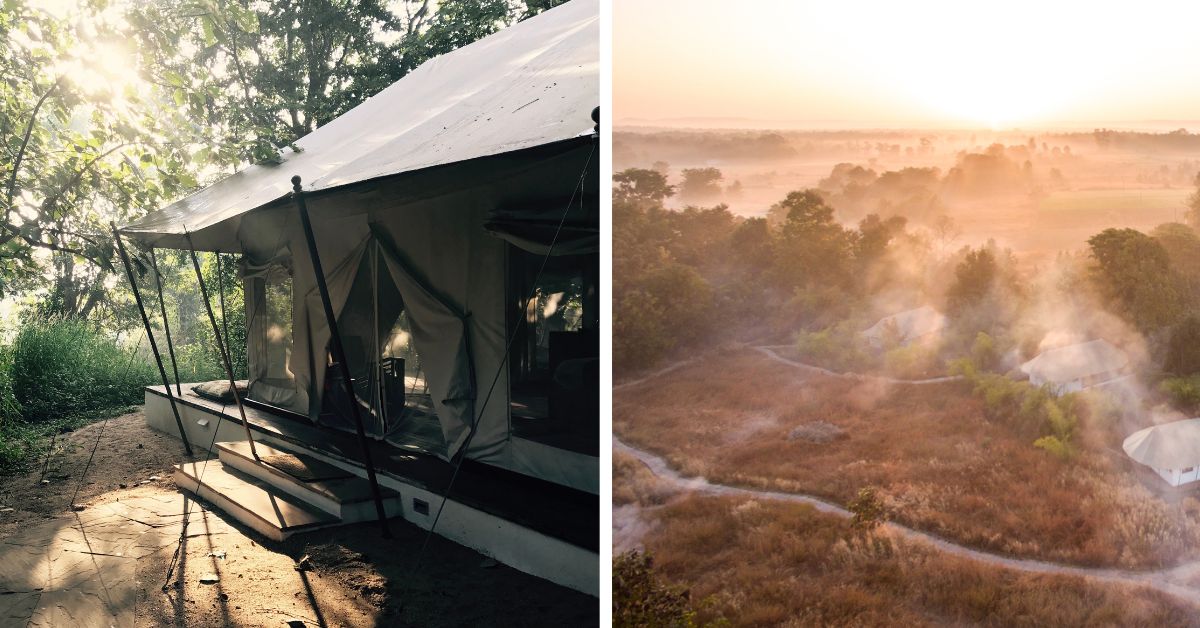 Every May Jamtara Wilderness Camp folds back into its existence, allowing the jungle to take over
Every May Jamtara Wilderness Camp folds back into its existence, allowing the jungle to take over
 At Jamtara Wilderness Camp the meals served are prepared from the produce that is grown on the farms using organic techniques
At Jamtara Wilderness Camp the meals served are prepared from the produce that is grown on the farms using organic techniques
The CCTV footage is proof of the wildlife passing through the corridors etched in the land, revealed once the ‘camp’ is packed up.
Amit’s itinerant travels — 65 odd countries and counting — inspired his design philosophy while building Jamtara. He was clear that he wanted to minimise the environmental footprint of the construction. So, the first thing he called for was a no-tree-cutting mandate.
The highlights of the decor are the pieces made of reclaimed seasoned wood. “These are from the decks of ships, writing desks from the Supreme Court of India and sofas that were used in the 70s art deco furniture used by embassies in Delhi,” Amit shares. “The flooring in the dining hall comes from old wooden doors from schools and government buildings in central India; the tiling is from government buildings which were being refurbished in the 40s and 50s. Everything has a story to tell while you’re at the camp,” he points out.
Guardians of the forest
The 1989-established Tiger Trust, a not-for-profit organisation, is the mainstay of the family’s legacy. The question ‘What more can we do to heal nature?’ has been the common thread in their endeavours. Even while setting up Jamtara Wilderness Camp, Amit shares his overarching concern around the human-wildlife conflicts in the area. “We wanted to contribute to the community in a way where wildlife wouldn’t become a hindrance but instead benefit them.”
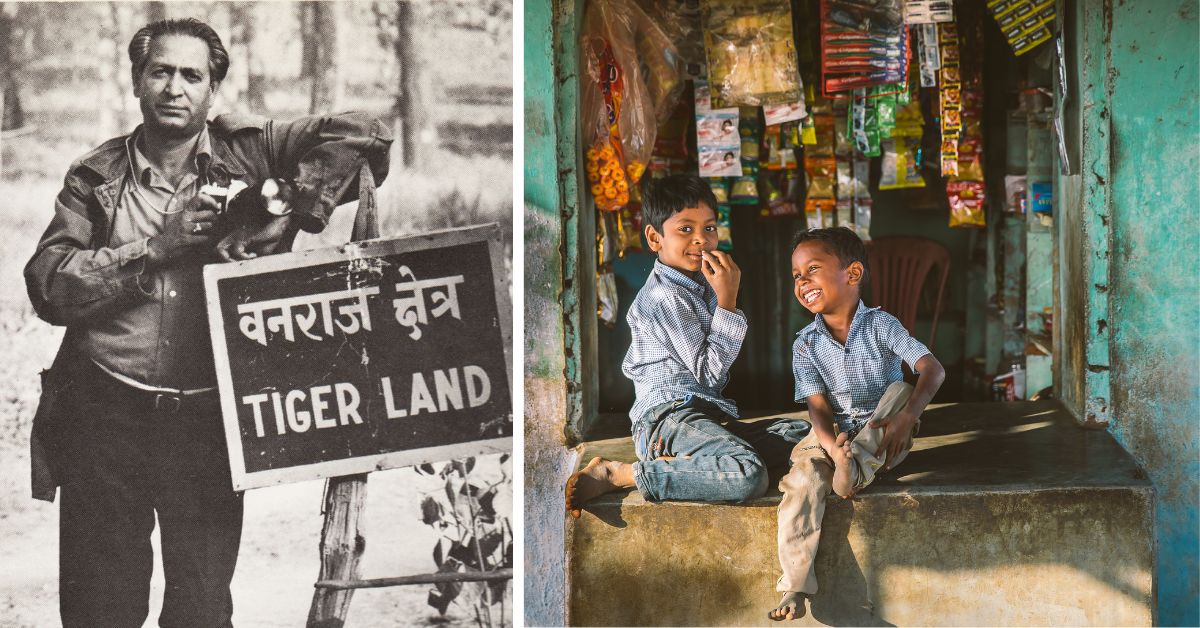 The Sankhala family has been intentional that their impact does not extend only to wildlife but also helps the locals mitigate challenges
The Sankhala family has been intentional that their impact does not extend only to wildlife but also helps the locals mitigate challenges
Amit’s concerns around human-wildlife conflicts were valid.
A 2020 report spotlights how, in areas of Madhya Pradesh, sloth bears are still victims of poaching. The reason lies in retaliatory killings when the bears come in contact with human settlements. A 2014 report by the World Wildlife Fund spotlighted how farmers in the Kanha-Pench Corridor estimate that they annually lose 30-50 percent of their crop due to crop raiding by wild ungulates.
Meanwhile, a 2023 report, which spoke about Madhya Pradesh being home to the highest tiger population in the country — the state has nine tiger reserves — underscored this as also the reason for human-tiger tussles. “The forest area in MP reportedly shrank by 3 percent as noted in 2017, and it is considered a major reason for human-wildlife conflict,” the report stated. A decrease in forest cover and human encroachment compounds the problem.
These reports shine a light on why the area around Jamtara is key for focusing on wildlife preservation. Coming from a line of conservationists, Amit says the endeavour has always been to facilitate change on the ground. “While Tiger Trust is an NGO our family started, we also do individual programmes to support and train guides in central India. This field has seen a skewed male dominance, and so we’re giving opportunities to women guides.”
Conservation is key. But all of Amit’s work is juxtaposed against the advice his grandfather left him with — “The tiger is a poster boy; it’s just one species. You save the tiger, and you save everything else around it: the land, the environment, the biodiversity, the air we breathe.” As Kailash Sankhala always emphasised, “You’re not just saving the animal. You’re saving mankind.”
All pictures courtesy Jamtara Wilderness Camp
Sources
News